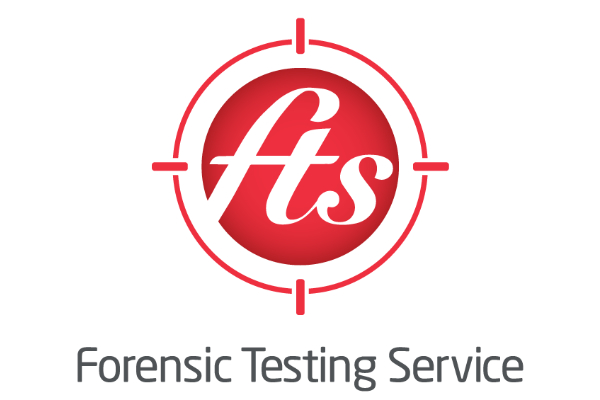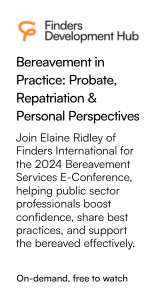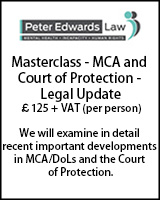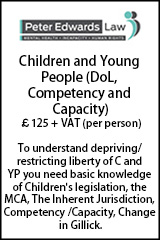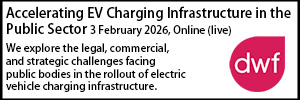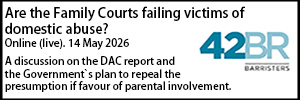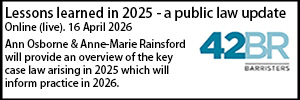Navigating key trends in health and safety prosecutions: Insights for care and housing providers
- Details
Recent prosecutions by both the Health and Safety Executive (HSE) and the Care Quality Commission (CQC) have brought forth issues which appear to be at the forefront of regulators’ minds. Freya Cassia and Beth Parlane identify developing trends which could help care and housing providers focus on improvements and address these issues.
Trends in prosecutions indicate the issues which regulators are prioritising and often reflect the issues that we see our clients facing. Being aware of those areas of focus can help care and housing providers direct their attention towards and address issues of particular concern before safety-related incidents and potential enforcement action can take place.
Care
In the previous year, there have been a total of 16 CQC prosecutions, 15 of which were successful. Meanwhile, between September 2022 and September 2023, there were a total of only 12 prosecutions, showing that the trend of increased criminal enforcement by the CQC continues. Fines for successful prosecutions also remain high, with the largest fine in the past six months being £650,000 against a healthcare provider, for failure to provide safe care and treatment resulting in people being exposed to significant risk of avoidable harm.
Prosecutions of a registered manager
Despite concerns around the mental wellbeing of leaders following the death of Ruth Perry, the CQC continues to exercise its power to prosecute certain individuals (eg. directors or registered managers) either in addition to or instead of the provider itself. Since January 2024, there have been four such instances where an individual has been prosecuted.
In one case, both the former registered manager of a residential care home and the care provider itself were prosecuted for failing to provide safe care and treatment. The prosecution related to a resident who was involved in three separate incidents of choking, with the final incident resulting in his death in January 2021. The resident had been assessed by speech and language therapists in February 2020 and a care plan was in place due to his risk of choking. However, both the registered manager and the care provider were found to have failed to make sure appropriate staff training, policies and guidance had been put in place for managing choking incidents.
The registered manager was personally ordered to pay £21,481.69 (inclusive of costs and victim surcharge) and the care provider was ordered to pay £45,481.69 (again, inclusive of costs and victim surcharge). We would usually expect to see a larger disparity between the fine for a care provider and an individual, however, this case indicates that consideration will be given to the culpability of each and the fines determined accordingly.
In another case, the former registered manager was ordered to pay £10,000 concerning an offence of failing to provide safe care and treatment and an offence of failing to safeguard a resident from abuse and improper treatment, thereby exposing them to avoidable harm. The registered manager had been informed by staff of an incident involving a female resident who could not consent to sexual relations and a male resident, who was found in her room leaning over her and kissing her, with his trousers lowered and engaging in an indecent act. The registered manager did not take action in line with the service’s safeguarding policy, or make referrals to other agencies.
Shortly after this incident, the male resident was found in the female resident’s room again, this time engaging in sexual activity with her. The CQC’s investigation found that the registered manager failed to adequately assess and mitigate the risks posed by the male resident to the female resident and protect her from abuse and improper treatment. In this case, only the registered manager was prosecuted, not the care provider.
While it remains less common to see enforcement action of this type taken against individuals, there appears to be a correlation between the steady increase in prosecutions more generally and an increase in enforcement being taken against individuals, either in addition to or instead of the care provider itself. It is therefore important to be aware that enforcement action can also be targeted towards individuals.
In addition to criminal prosecutions against an individual, the CQC can take other enforcement actions such as cancelling the registration of a registered manager. Being faced with enforcement action is never easy, especially when the action is being taken against an individual. It can be stressful to navigate the appeals process, so it is important to seek early legal advice so that any challenge is as robust as possible and the staff concerned can be supported throughout the process.
Falls
Regulators across the health and social care sector have maintained their focus on falls from windows. One care provider was prosecuted by the CQC for failing to provide safe care following the death of a resident. The resident and his wife were admitted to a nursing home in May. He was admitted for nursing and personal care and his wife for palliative care. Shortly afterwards, his wife passed away and he became increasingly agitated. Two days after his wife’s death, he fell from his first-floor bedroom window. He suffered various injuries and passed away shortly afterwards, partly due to the injuries sustained from the fall.
The care provider was prosecuted for failure to ensure the nursing home had HSE-compliant window restrictors, despite the lack of window restrictors being previously identified in a visit by the local authority and invoices for window restrictors dated a few weeks before the incident being found at the nursing home. In addition, the provider had failed to inform and apologise to the resident’s family soon enough after the incident and his death, therefore not fulfilling their duty of candour.
A Scottish health board was also fined £220,000 by the HSE following the death of two patients:
- One patient died in October 2017 after falling from a second-floor window. He had undergone surgery in relation to a head injury sustained during an attempt to take his own life and was experiencing confusion, delirium and anxiety. It was therefore considered to be foreseeable that he could be at increased risk. However, the window in his room was not restricted to the required 100mm opening gap.
- The second patient was presenting with hallucinations, confusion, distress and showing signs of delirium. He attempted to abscond on multiple occasions over the course of a few days and on his final attempt, fell from a first-floor window. He did not regain consciousness and passed away a few days later in February 2021. The health board was fined £220,000 following the second incident for failing to ensure the risks to patients falling from windows were managed.
In another case, a Scottish care home operator was prosecuted by the HSE for safety breaches following the death of a resident who had been able to access the courtyard unsupervised. The resident had fallen and hit her head then spent an hour and a half outside in the cold before staff found her. The care home operator was fined £400,000 for safety breaches.
Providers must, as appropriate, carry out an assessment of the risks of falls arising from the premises and the risks of falls for individual service users. Following these risk assessments, providers should then put in place measures to mitigate the risks identified. In all cases, providers must ensure that they take into account sector-specific guidance. For example, in the case of falls from windows, detailed guidance from the HSE is available here.
Mitigating the risk of falls and self-harm
In addition to the cases outlined above, a number of prosecutions arose from failing to properly manage the risk of self-harm of the people supported. While the cases were brought against healthcare providers, the underlying issues will be of equal relevance to social care providers.
In one case, an NHS trust was prosecuted by the CQC for two offences of failing to provide safe care and treatment to two people, exposing them to a significant risk of avoidable harm following the deaths of two patients in their care. In separate instances, both patients died after sustaining self-inflicted injuries. The trust was aware that both patients had attempted to harm themselves respectively in similar ways just before their deaths. In both cases, the trust had failed to adequately mitigate the known risk and was ordered to pay a total of £215,170.
In another case, a patient absconded by scaling a courtyard fence and then was tragically killed after being struck by a train. The care provider was prosecuted for failing to carry out a full review of the security of the fences following previous incidents relating to the same fence over which the patient absconded.
In addition, a different health board was fined by the HSE following the death of a patient in a secure mental health unit. When the patient had been admitted, due to communication failures, no risk assessment was carried out and an out-of-date assessment was used in its place. The patient’s high risk of self-harm was not identified, despite there being multiple occasions where the patient had expressed a desire to self-harm and staff failed to place her on an anti-ligature bed and de-escalated the completion of regular monitoring checks. She was also provided with a dressing gown with a belt and later used the belt as a ligature to take her own life. The investigation highlighted the need for risks to be mitigated and staff to be trained in managing these risks when a patient is at risk of self-harm and the health board was fined £200,000.
These cases demonstrate the importance of providers identifying risks of and potential opportunities for self-harm and promptly taking action to mitigate those risks, especially where issues have already arisen. It is important to keep measures under regular review to ensure that they are still effective as the risk evolves.
Other notable cases
- A Bristol care home has been fined for not doing enough to keep people safe from vulnerable patients who posed a danger to themselves or others. This followed the murder of an 18-year-old female resident in October 2014 by another male resident. The male resident had been involved in several incidents that highlighted the need for close monitoring and a risk assessment was in place which indicated he posed a risk to others and had demonstrated sexual aggression towards women. The HSE investigation found that the care home did not have suitable trained and qualified staff in sufficient numbers to adequately deal with the male resident and staff were not sufficiently informed of the risks he posed. There was also not adequate monitoring and insufficient control methods in place to ensure the safety of other residents.
- Finally, a local authority has been fined for safety breaches following the death of a man to whom they were providing care in a supported living accommodation. The man could only be given food that was carefully prepared to ensure it was soft and bite-sized, however, he was given food that was not suitable for his prescribed diet by a carer and died following a choking incident. We often see prosecutions by the CQC in relation to choking-related incidents: providers should always ensure that they have clear policies on choking and that staff are aware of what to do should an incident occur.
Key messages for care providers
- The large proportion of prosecutions in the past year by both the CQC and the HSE which related to the failure to properly identify and mitigate risks, highlights the importance of care providers and registered managers being aware of all known risks to their residents or patients and taking adequate steps to mitigate these risks. Full and adequate risk assessments must be carried out which address all known risks to those being supported and to staff and that a care plan is put in place for each resident.
- It is of note that in many of the cases highlighted that the risks were known and apparently robust policies and procedures were in place. Despite this, people in receipt of care and support still came to harm because those policies and procedures were not followed. That is a common feature of the inquest work that we undertake, suggesting that it is a common point of weakness across the sector.
- Care providers and registered managers must also ensure that all mitigations identified in these documents are put into practice and that concerns are recorded, investigated and addressed promptly.
- As well as this, providers should ensure that staff are made aware of the mitigations identified in risk assessments and are actively putting them into practice. Staff should have completed all training which may be needed to support individuals and be provided with guidance when necessary.
- The failure to adequately mitigate the risks of falls, absconding or self-inflicted injuries remains a common trend in prosecutions over the past 12 months. Care providers should ensure that particular attention is paid to identify and address these risks.
- Finally, where issues are identified which require physical adaptations to accommodation to ensure or improve patient or resident safety, providers should ensure that these adaptations are completed without delay.
Issues to consider for housing providers
The HSE remains focused on issues of machinery safety, vehicle and transport safety, working at height and asbestos-related prosecutions. Whilst the majority of prosecutions are brought against construction and manufacturing companies, the issues raised remain relevant to housing providers and many care providers who control property and provide some insight into the issues that providers should ensure are being addressed.
Providers should also note that in the past 12 months, there have been several prosecutions in which the company director is prosecuted personally either as well as or instead of the company, particularly in instances where there has been previous intervention from the HSE and remedial action is not undertaken. Providers and directors should ensure that following any HSE intervention, remedial action is taken promptly to address the issue raised.
We have identified that a key trend in prosecutions over the past 12 months has been a focus on the failure to properly plan, manage and supervise work being undertaken. There is also a focus on failure to complete appropriate risk assessments that cover the full scope of the work. We have highlighted the prevalence of this trend in prosecutions relating to working at a height below, however, it is evident across a significant proportion of all prosecutions over the past 12 months, particularly prosecutions concerning machinery safety and vehicle and transport safety.
Working at height
A significant number of prosecutions have been brought for breaches of the Working at Height Regulations 2005. The regulations require employers and those in control of any work at height activity to ensure work is properly planned, supervised and carried out by competent people to prevent death and injury caused by a fall from height. A large proportion of these prosecutions relate to the failure to properly plan, manage and monitor the work at height.
- A company and its director were both sentenced after an employee fell from a ladder while carrying out work on the guttering and fascia boards at a primary school. The ladder slipped and caused the man to fall to the ground, sustaining serious injuries. The HSE investigation found that there was insufficient planning of the work by the company director. A safe platform from which to work from should have been provided in these circumstances, in line with the HSE guidance. The company was fined and the director was given a community order.
- Similarly, two companies were fined after a worker fell from a roof with unprotected edges and suffered multiple fractures to his legs. It was found that the incident could have been prevented if basic, industry-standard control measures had been put in place and both companies had failed to adequately plan, appropriately supervise and ensure that the work was carried out safely.
Given that falls from height remain one of the most common causes of work-related fatalities and injuries, providers must take steps to ensure that work carried out at height is properly planned, managed and monitored and that employees undertaking this work are properly trained to do so.
Risk assessments
In addition to this, many prosecutions in the past year have been brought for failure to carry out an adequate risk assessment for the work being completed or to put the measures identified in risk assessments into practice. There have been 14 such prosecutions in the past 12 months and two examples include:
- Both the company and its director were fined when an employee suffered serious injuries including fractures to his face and skull and the loss of sight in one eye. The employee was struck by an object while manufacturing a large steel cable drum for the offshore industry. The company was fined for failing to carry out a suitable and sufficient risk assessment, control risks from welding in a confined space and failing to provide full training. The director was fined for not providing safe systems of work for metal fabrication work, despite the previous HSE interventions about this.
- A company was fined £40,000 and its director £2,000 when an employee was injured following a fall through an open stairwell during the construction of new houses in Lichfield. The risk of internal falls had been identified in a risk assessment, however, suitable measures had not been put in place in this area of the site to mitigate the risks identified.
It is essential that adequate risk assessments are completed for all work being undertaken and the mitigations identified are put into practice. It is also important that risk assessments are reviewed regularly and updated where required.
Other cases
- A body that manages a major forest was fined after a husband and wife were struck by a tree being felled and the wife suffered a traumatic brain injury among other injuries. The HSE investigation found that precautions such as posting warning signs and using barriers and banksmen were not implemented to prevent members of the public from accessing the area. This case reminds care and housing providers that their duties under the Health and Safety at Work Act 1974 extend to all those who may be affected by their operations, including members of the public.
- A housing provider was fined after an employee who was repairing a fence post in the back garden of a tenant’s property inadvertently struck an underground electrical cable and suffered burns to his face. The housing provider had failed to provide the employee and his colleague with information on the location of or the tools to safely excavate around an electrical cable and gas pipe, despite the risk of underground services being identified in a risk assessment previously. The employees were digging near both an electrical cable and a gas service, so there was a heightened risk of a potentially fatal fire or explosion, putting both the employees and nearby members of the public at risk. This case is a reminder to providers that even in the case of regular and routine maintenance work, it is essential that measures are in place to mitigate any risks identified so that the work is carried out safely.
Key messages for housing providers
- The HSE is pushing a greater focus on companies properly planning, managing and supervising work and completing adequate risk assessments. Providers must ensure these steps are taken in relation to all work they undertake, whether routine maintenance work or larger construction projects.
- Adequate risk assessments should be completed which take into account the full scope of the work. This includes assessing the risks to anyone who may be affected by the operations, including members of the public or volunteers. Providers must ensure they have assessed the less obvious, wider risks associated with their operations and sites etc. It is also essential that steps are taken promptly to mitigate those risks identified in the risk assessment.
- Providers must be proactive about identifying, mitigating and addressing risks, particularly where there has been previous HSE involvement, to demonstrate to the regulator that concerns are being taken seriously.
Freya Cassia is a solicitor and Beth Parlane is a trainee solicitor at Anthony Collins.






